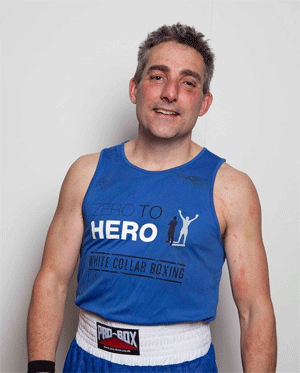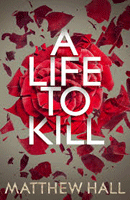January 2017
sees the publication of A Life To Kill,
the seventh novel featuring Coroner, Jenny Cooper.
It's a book
that came about by a chance encounter a couple of years ago with an old
acquaintance from student days, Frank Ledwidge, who had been in military
intelligence in Iraq and Afghanistan. As I explain in the author's note at the
end of the book, Frank told me about his experiences in these two wars he
considered dubious, to say the least, and introduced me to a young infantry
officer named Ed who had recently commanded a combat platoon in Helmand.
Talking to
Ed, I got an unvarnished insight into the reality of combat for the very young
men who fight on the front line. Ed was twenty-five when he commanded his
platoon, his men were mostly aged eighteen to twenty-three. The average age of
an infantry soldier is twenty. What he told me became the raw material and
inspiration for the story. The factual details of the living conditions of the
soldiers is completely real and straight from the horse's mouth.
I like to
research my books as much as I can. Talking to Frank, Ed and others, including
a very senior coroner with long experience of conducting the most politically
sensitive of military inquests, gave me all the factual information I needed to
tell an accurate story. There was still a bit missing, though, which was an
insight into the minds of young men who, charged with testosterone, are
propelled into violence.
Male
aggression is a hard thing to explain to those who have never experienced it
for themselves. It's a vital energy that when harnessed and directed can be
used to huge creative or destructive effect. Most young men fantasize about
violence to some extent, not because they consciously wish to inflict it, but
because it's part of the elemental animal make-up. The violent instinct is that
which can become career ambition, or sporting talent. It's just energy that
manifests in a particular way - and it's strong enough to overcome the fear of
injury or even death.
I couldn't go
to war, but I could try to tap into the experience of being a 'warrior', albeit
one who wasn't going to be shot at. I signed up along with a bunch of lads from
Bath and Bristol for an intensive boxing programme that ended with a big
tournament in front a crowd in an indoor arena in North Somerset. It was billed
as a 'white collar' event, but the few of us with desk jobs were heavily
outnumbered by the boys who make their living scaffolding, plastering and
myriad other ways of working up a sweat. In amongst them were a few former
soldiers (though they still looked like boys to me), who proved another useful
source of information.
 As soon as we
started training, whatever we did for our day jobs ceased to matter. It was all
about trying not to get hurt while landing a few. I turned out to be very good
at getting hit and spent months sporting black eyes and bruised ribs! It was
fun, though, and more than that, absolutely exhilarating. To my surprise, even
at forty-six I had plenty of violence left in me, and during the months of
training it found an outlet in boxing: I have never felt calmer or more at ease
with the world than during that period. Ed had said to me that there something
almost 'zen' about the experience of being a soldier in a forward command post
for six months. I began to understand what he meant: everything came into sharp
focus. All other cares fell away. Preparation for a big fight in front of a
crowd and the feeling of physical fitness and competence that came with it
channeled all that churning male aggression into a pure stream. Life had clarity
and purpose; the destructive urges which in normal life are a disruptive
influence and a disturbance to the psyche found their expression and created,
dare I say it, an inner sense of nobility, the like of which I hadn't known
before.
As soon as we
started training, whatever we did for our day jobs ceased to matter. It was all
about trying not to get hurt while landing a few. I turned out to be very good
at getting hit and spent months sporting black eyes and bruised ribs! It was
fun, though, and more than that, absolutely exhilarating. To my surprise, even
at forty-six I had plenty of violence left in me, and during the months of
training it found an outlet in boxing: I have never felt calmer or more at ease
with the world than during that period. Ed had said to me that there something
almost 'zen' about the experience of being a soldier in a forward command post
for six months. I began to understand what he meant: everything came into sharp
focus. All other cares fell away. Preparation for a big fight in front of a
crowd and the feeling of physical fitness and competence that came with it
channeled all that churning male aggression into a pure stream. Life had clarity
and purpose; the destructive urges which in normal life are a disruptive
influence and a disturbance to the psyche found their expression and created,
dare I say it, an inner sense of nobility, the like of which I hadn't known
before.
There was, strange
as it may sound, peace in the middleof this structured violence. There was
also a great camaraderie. Except when we were busting each others' noses, we
pugilists couldn't have felt more warmly towards one another. All barriers fell
away and we became firm friends.
Fight night
was a thrill. Terror followed by the adrenalin rush of walking through the
crowd accompanied by pounding music into the ring. The punches flew but we
didn't feel a thing. I was pipped on points (alright, he kept jabbing me in the
nose, and now it's permanently bent), but it was without doubt the most
exciting evening I've ever had.
I came away
with a bunch of new and perhaps unlikely friends with whom I've stayed in
touch, and with a far deeper understanding of myself and of the nature and
positive potential of the violent impulses that grip and drive so many of us.
There's no question that the experience was invaluable in informing my writing
and helped in the creation of many of the characters who appear in the book -
some of whom are even named after my boxing buddies. (Will they read it and
find their names? I hope so!)
As for the
young soldiers, I feel nothing but sympathy and admiration for them. There's an
exchange in the book about the fact that soldiers are volunteers, with the
implication that they must accept the consequences. A bereaved family member
questions what it means for an unformed teenage boy to 'volunteer'. The
soldiers we put in harm's way are lads from the poorest homes and the roughest
areas. Many are simply looking for order, structure and a means of channeling
that aggression that so can easily become self destructive.
If you get a
chance to read the book, I do hope you enjoy it. Here are a few
pictures from the night of the fight that marked the end of the physical
aspect of my research I’d happily do it all over again.
BUY IT

Mantle Publishers
January 12, 2017
Hbk £16.99
Photos © Matthew Hall
low dose naltraxone
read revia medication
naltrexone and alcohol
site naltrexone pregnancy